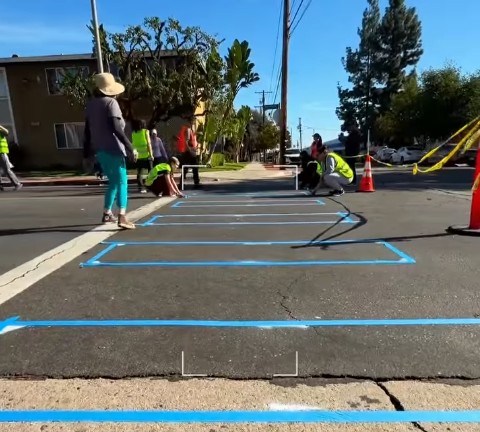
On a unanimous 5-0 vote last night, the Monrovia City Council approved the city's new bicycle master plan.
Monrovia's bicycle plan was developed in consultation with Alta Planning + Design. The plan calls for 3.7 miles of bike paths (along the Sawpit and Santa Anita Washes), 5.1 miles of bike lanes, 17.9 miles of sharrowed bike routes, and 7.1 miles for further study for protected bike lanes. The plan also calls for bike parking, bicycle wayfinding, open streets events, bike-share, and education and encouragement programs.
Public testimony was strongly in favor of the plan, with three San Gabriel Valley residents testifying in support of safety, health, environmental, and economic benefits of making Monrovia safer for cycling. Speakers acknowledged the efforts of city staff and Move Monrovia in taking the plan from idea to approval.
Among the elected officials, there was a great deal of support for, in the words of Mayor Tom Adams, taking "the first of many steps in the right direction" to make Monrovia more bicycle-friendly. Councilmember Gloria Crudgington emphasized that, by approving the plan, Monrovia sets a leadership example for the region. The only minor concerns raised regarding the plan were from Mayor Pro Tem Alexander Blackburn who wanted to make certain that the plan would conform with state requirements, thus making Monrovia eligible for state bicycle funding, including California's statewide Active Transportation Program. Multiple councilmembers expressed interest in working to implement Metro Bike Share to connect downtown Monrovia with the city's newly opened Metro Gold Line Station.
As emphasized in all capital letters in Public Works Manager Sean Sullivan's presentation, the bulk of the approved bicycle facilities, including all of the protected bike lanes, will "require further review and study" before implementation.
Monrovia is looking to get a jump on bike facility implementation as the city embarks on Monrovia Renewal, a public works initiative to refurbish and repair existing city streets, sidewalks, and water infrastructure. To the extent that bike lanes and sharrows can be a part of the larger street resurfacing efforts, the new bike facilities are essentially free.
SBLA coverage of San Gabriel Valley livability is supported by Foothill Transit. Foothill Transit has been a leader in sustainable transportation for years. And now they’re committed to having a 100% electric bus fleet by 2030. To celebrate, Foothill Transit is giving away prizes and sharing facts about how their electric buses help clear the air. Visit Foothill Transit’s e-bus sweepstakes webpage to see how you can join in the eco-friendly fun!






